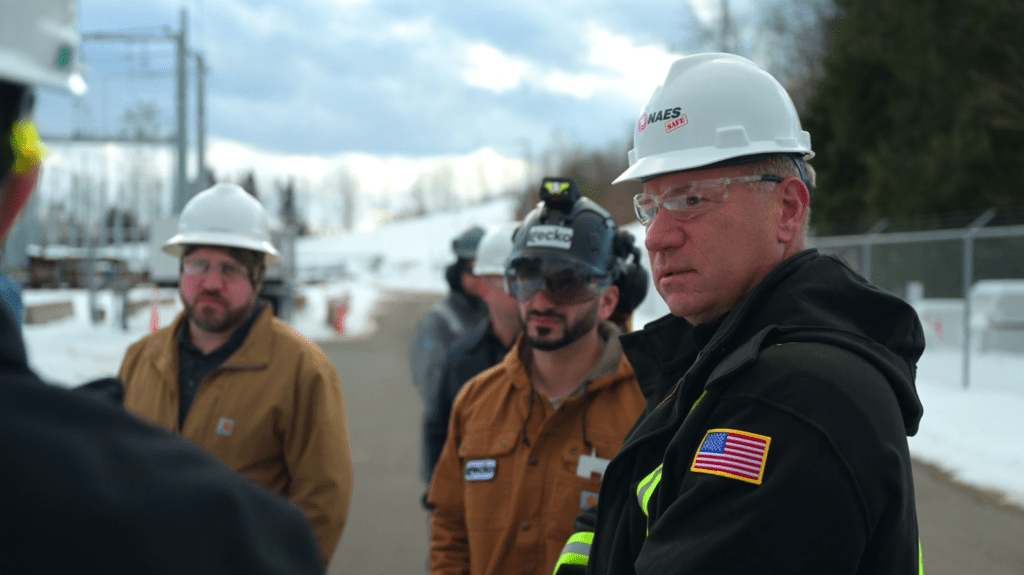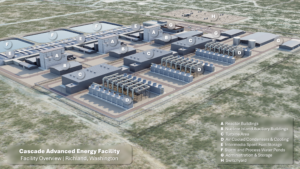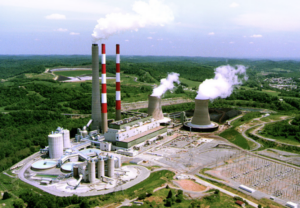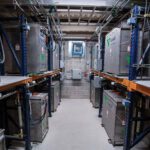In a bid to stave off an escalating power crisis, NAES, one of the largest independent power plant operators in the U.S., and Gecko Robotics, a leader in AI-driven robotic inspection and predictive maintenance, have moved to champion a prominent role for the nation’s existing fleet, launching a $100 million strategic partnership to bolster their modernization and improve their efficiency. The unprecedented collaboration, announced on Feb. 27, comes amid growing concerns over grid reliability and is strongly backed by Pennsylvania Governor Josh Shapiro, who warned that sluggish energy project approvals are hindering economic growth and could force the state to reconsider its role in the PJM power grid.
The partnership between NAES and Gecko Robotics, which could expand beyond $250 million as demand warrants, seeks to deploy advanced AI and robotic technologies initially across the 65 GW of power generation assets managed by NAES to enhance efficiency, reliability, and workforce capabilities.
At the heart of the partnership is Gecko’s AI-driven Cantilever platform, an ecosystem of mobile robots, drones, robotic dogs, and fixed sensors that continuously monitor and optimize power plant equipment by collecting real-time data, applying advanced analytics to predict and prevent failures, extending asset lifespans, and uncovering new ways to boost output. While the primary focus is on NAES-operated facilities, the companies are also exploring opportunities to expand Gecko’s Cantilever platform to other power producers through potential licensing agreements or joint ventures, with a broad goal of transforming the entire power generation industry.
In an exclusive interview with POWER, NAES CEO Mark Dobler and Gecko Robotics CEO Jake Loosararian underscored the urgent need for technology-driven solutions to meet rising power demands. While energy projections vary, energy policy consulting firm Grid Strategies has found the 5-year load growth forecast has increased by almost a factor of five, from 23 GW to 128 GW—and that nationwide, power demand is forecast to increase by 15.8% by 2029 (over the next four years). Data center growth forecasts range from 65 GW to over 90 GW, while manufacturing demand could add up to 20 GW, and electrification and other sources may contribute another 20 GW to overall load growth.
The looming power crisis has been exacerbated by a series of new hurdles, directly impacting the performance of existing power plants. As POWER reported as part of its February Operations and Maintenance (O&M)-focused special report issue, these challenges include the accelerated retirement of fossil-fueled capacity, sluggish progress on new resource additions, rising O&M costs, workforce shortages, regulatory uncertainties, and the growing complexity of integrating renewables into an aging grid. All are straining reliability and forcing operators to rethink maintenance and modernization strategies.
As Dobler noted, workforce shortages pose a major concern.“If the 100 to 400 GW of additional generation we need had to be met with new plants, that’s 15,000 to 20,000 incremental O&M people needed just to run those facilities,” he said. “And we’re already fighting a retirement wave.” An estimated “25% of plant O&M [personnel] across the country will be retiring in the next five to 10 years. That’s a lot of talent leaving the industry, a lot of experience leaving the industry at the same time where you’ve having a lot of new generation coming online,” he said. “So, it’s a bit of perfect storm, related not only to sourcing the new plant and equipment and getting it installed and constructed, but then also the startup and commissioning, and then the O&M of these 25- to 30-year assets,” he added. “There’s really no other way to fill the gap without using technology.”
Loosararian emphasized the gravity of the crisis, warning that its challenges extend beyond grid reliability. “This isn’t just about efficiency or reliability—it’s about national security, global competitiveness, and the future of our entire energy system,” he said. “The time for incremental change is over. It’s time to go big, and go fast.” He added: “We don’t have the people or the capacity to keep the lights on using the old playbook. Artificial intelligence and robotics are the only way we’re going to be able to meet this moment.”

Revolutionizing Power Plant Operations with AI and Robotics
Both NAES and Gecko view the $100 million initiative as a transformational imperative for power plant operations. “We want to kill the way that plants are run today,” said Loosarian bluntly. “We’re replacing the old way with a fundamentally new approach, built from first principles using AI and robotics.”
The executives told POWER both companies have commitments to the financial investment, though NAES and Gecko are still working to engineer the structure of the partnership for maximum impact, and declined to share the types of investments it will include, the sources of financing, and assets they will affect. “We really don’t want to box ourselves in in terms of doing what’s right for both businesses and giving the industry a solution,” said Dobler.
Meanwhile, though the scale on which the partnership intends to deliver is unprecedented, it may still encounter industry-wide challenges that have stymied the wider uptake of AI and robotics in the power industry. That includes regulatory hesitance and industry skepticism. “There’s been some resistance from operators, regulators, and utilities,” Loosararian acknowledged. “But the reality is, this isn’t optional. The technology works. If we don’t do this now, we’re going to be left behind.”
Dobler agreed, stressing that the NAES-Gecko partnership goes beyond developing technology. Ensuring its adoption at scale is the primary objective, he said. “We’re not AI experts. We needed a partner who could take a solutions-based approach—not just a tech company selling a product, but someone who understands our industry and works with us to implement real change. That’s what makes Gecko different.”
Loosarian predicted progress over the next year, driven by the partners’ goal to turn power plants into self-optimizing AI-driven systems that will set a new standard for reliability, efficiency, and cost-effectiveness. “Within the next 12 months, we’ll start seeing major gains at these facilities, and those without this technology will be left behind,” he said.

An Energy Strategy with Federal and State Backing
Beyond transforming plant operations, the partnership aligns with federal energy priorities. “White House officials are closely monitoring the initiative,” Loosararian said. “We are working closely with key members of the administration to ensure this moves forward as a national priority,” he revealed. “This is a national security issue, not just an industry one. AI’s ties to national security mean defense agencies are paying attention, too.”
During a press briefing on Thursday to shed light on the partnership, Pennsylvania Governor Josh Shapiro also expressed solid support for the collaboration. Shapiro noted the innovative measure, led by Pittsburg-headquartered Gecko, is pivotal in setting the stage for both the future of technology and energy. “I have an economic development strategy here in Pennsylvania that leans heavily on robotics and technology as a key pillar of opportunity, alongside energy—another pillar of opportunity—and obviously, we’ve got a long legacy of leadership there,” he noted.
While Pennsylvania has long pursued an “all-of-the-above” energy strategy—supporting coal, natural gas, nuclear, and renewables—Shapiro suggested that adopting cutting-edge solutions like AI-driven robotics would modernize the power sector while attracting investment and high-skilled jobs. “I have a plan to increase generation here in Pennsylvania, while creating jobs, fostering innovation like the kind that occurs over at Gecko every day, so we can both cut costs and take action on climate change and ensure people have reliable, affordable energy all across Pennsylvania and across this great country,” he said.
Shapiro Suggests Pennsylvania Considering Leaving PJM
Shapiro on Thursday, however, framed the state’s energy challenges within a broader economic and technological race, warning that Pennsylvania must take decisive steps to expand power generation.
While the state ranks third nationally in electricity production, it relied on natural gas for nearly 60% of its power in 2023 (up from 22% a decade ago). The state’s four nuclear plants provided about 32%. At least one reactor, the Crane Energy Center (formerly Three Mile Island 1) is undergoing recommissioning to meet soaring data center demand. Coal power has dramatically declined from 39% of generation in 2013 to just 5% in 2023, while renewables provided 4%. For now, three electric-transmission zones in Pennsylvania are expected to see sharp increases—of up 60%—in power demand due to current and new data centers
“We’ve got to have more generation here in the Commonwealth of Pennsylvania, across the PJM states, and across this country, if we’re going to win the race on AI, if we’re going to continue to be able to provide affordable, accessible, reliable power to all Pennsylvanians,” Shapiro said.
He stressed that PJM’s protracted interconnection process has slowed critical investments in energy infrastructure, delaying new power plants at a time when electricity demand is projected to surge. “It has proven over the last number of years, too darn hard to get enough new generation projects off the ground because of how slow PJM is,” Shapiro added.
The governor’s frustration with PJM comes after months of escalating tensions. In December, Pennsylvania filed a formal complaint with the Federal Energy Regulatory Commission (FERC), arguing that PJM’s capacity market design had led to volatile electricity prices without ensuring the development of new generation. The complaint cited PJM’s July 2024 Base Residual Auction, which saw capacity prices jump nearly tenfold—from $28.92/MW-day to $269.92/MW-day—amid a worsening supply-demand imbalance.
Shapiro’s administration contended that the grid operator’s interconnection backlog, which includes 3,300 pending projects, has exacerbated the state’s energy shortfall. Pennsylvania warned that if no corrective measures were taken, consumers could face up to $74 billion in avoidable costs over the next two years. A settlement reached in January between Shapiro and PJM resulted in a significant reduction of the auction price cap, lowering it from more than $500/MW-day to $325/MW-day.
On Thursday, the governor explicitly suggested that if PJM cannot adapt, Pennsylvania may seek an independent energy strategy. “We are exploring all options here in Pennsylvania, including removing ourselves from PJM, going in alone and determining if that is a better course for both consumer pricing and power generation in our common market,” he said.
Shapiro’s remarks come as Pennsylvania looks to ramp up energy investments through tax incentives and regulatory reforms. His newly proposed Pennsylvania Reliable Energy Siting and Electric Transition (RESET) Board seeks to fast-track new power plant construction and accelerate permitting for large-scale energy projects. The RESET Board is a key component of Shapiro’s broader “Lightning Plan,” an ambitious, all-of-the-above energy strategy designed to attract investment, create jobs, and strengthen Pennsylvania’s position as a national energy leader.
As part of this initiative, Shapiro’s administration is also revamping Pennsylvania’s Economic Development for a Growing Economy (EDGE) tax credit program, unlocking billions in untapped economic opportunities through targeted incentives, including up to $100 million per facility for new power plants, $49 million annually for clean hydrogen projects, and $15 million per year to boost sustainable aviation fuel (SAF) investments. “We need shovels in the ground now, not in the years to come,” the governor reportedly said during a speech on Thursday morning.
As Dobler noted, the imperative has been broadly echoed by key Trump administrators. Interior Secretary Doug Burgum in a speech to the Conservative Political Action Conference on Friday called for commitment to utilize and maximize all available energy resources. “The fastest way to get incremental power to the grid today is to further optimize the installed plant that already exists,” Dobler said. “Can we get another 10% to 15% out of the 1,300 GW that exist in the country today? That’s exactly what NAES and Gecko are working toward—deploying technologies that push efficiency limits without compromising reliability.”
Dobler emphasized that NAES has already developed technologies to optimize plant performance, and they are actively being deployed at customer sites to improve turbine efficiency at gas plants. “Being able to integrate that with Cantilever, to augment those capabilities with AI-driven automation, wasn’t even on our radar 30 days ago.” While the power sector faces formidable challenges, Dobler suggested that tackling these hurdles head-on could unlock new opportunities. “It’s such a dynamic time,” he reflected.
—Sonal Patel is a POWER senior editor (@sonalcpatel, @POWERmagazine).










